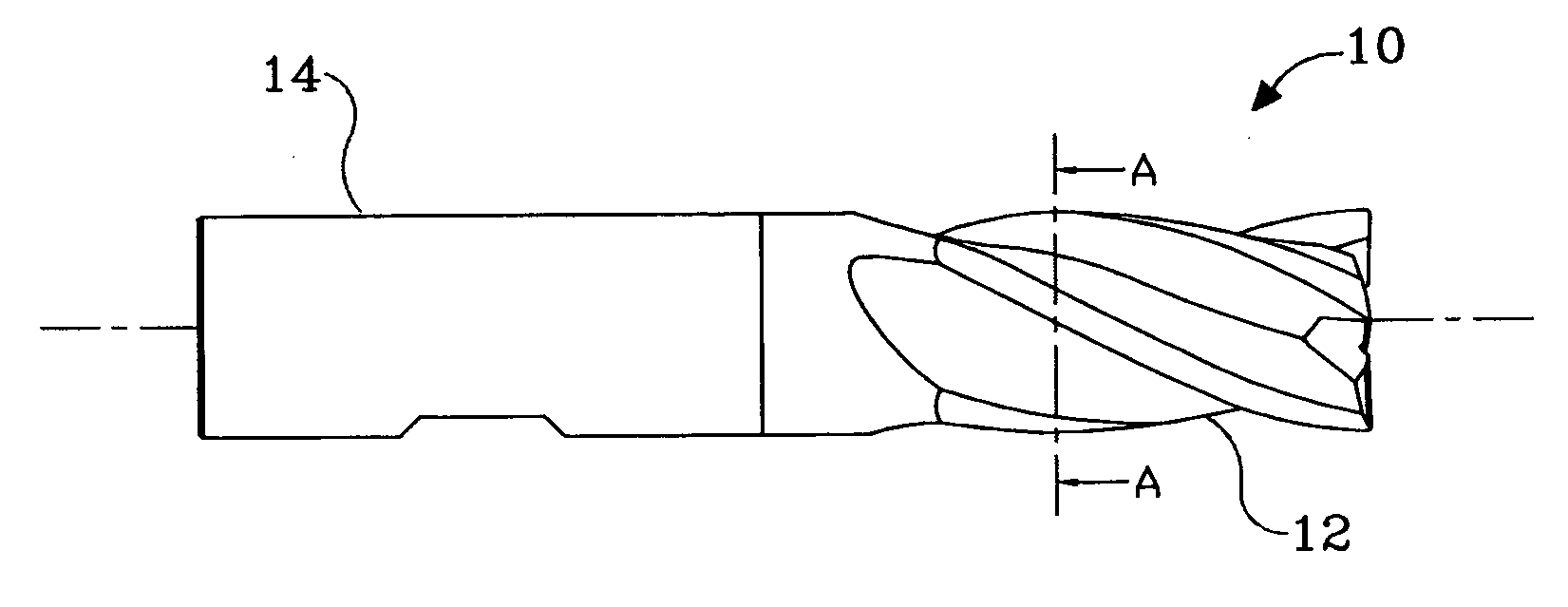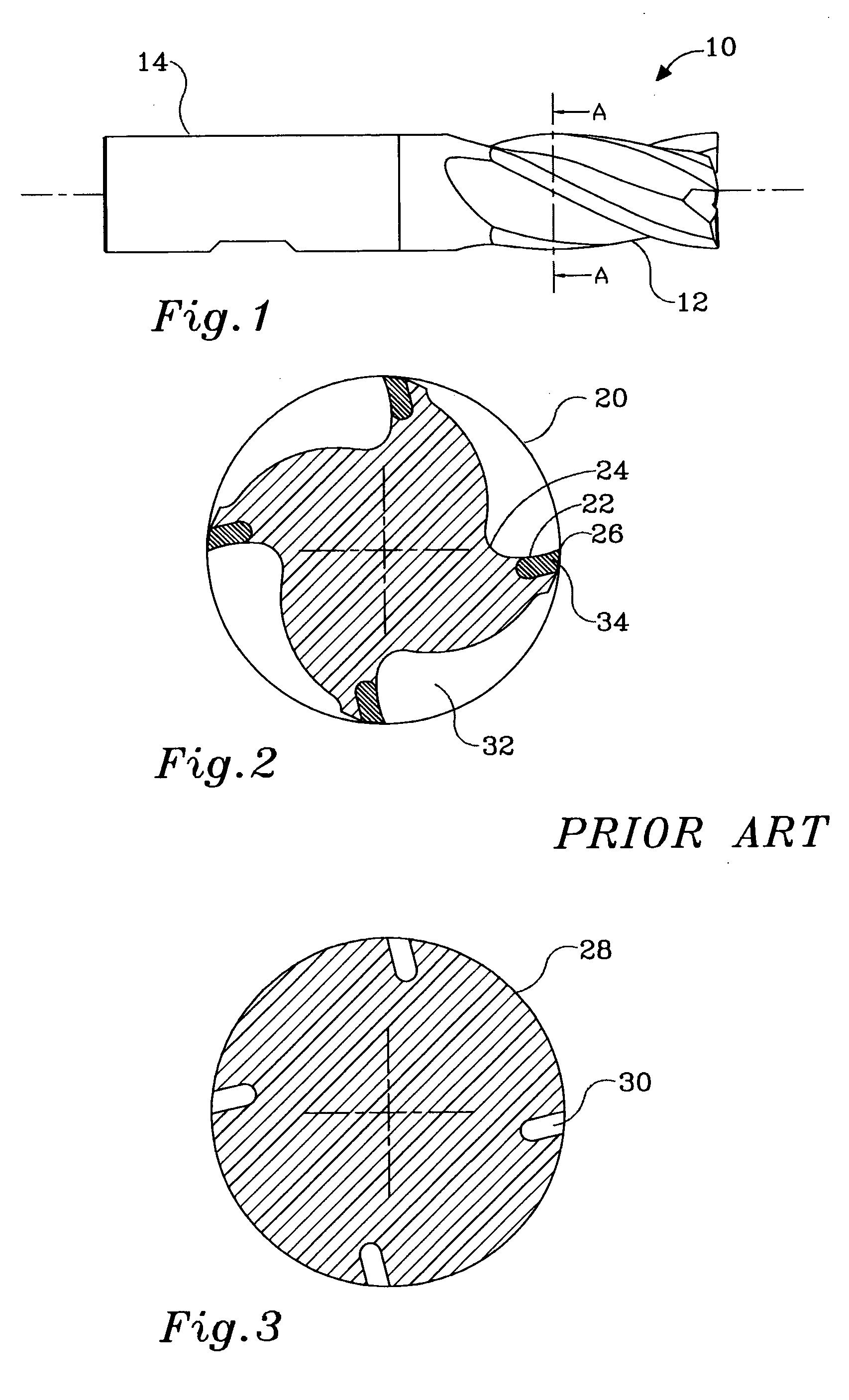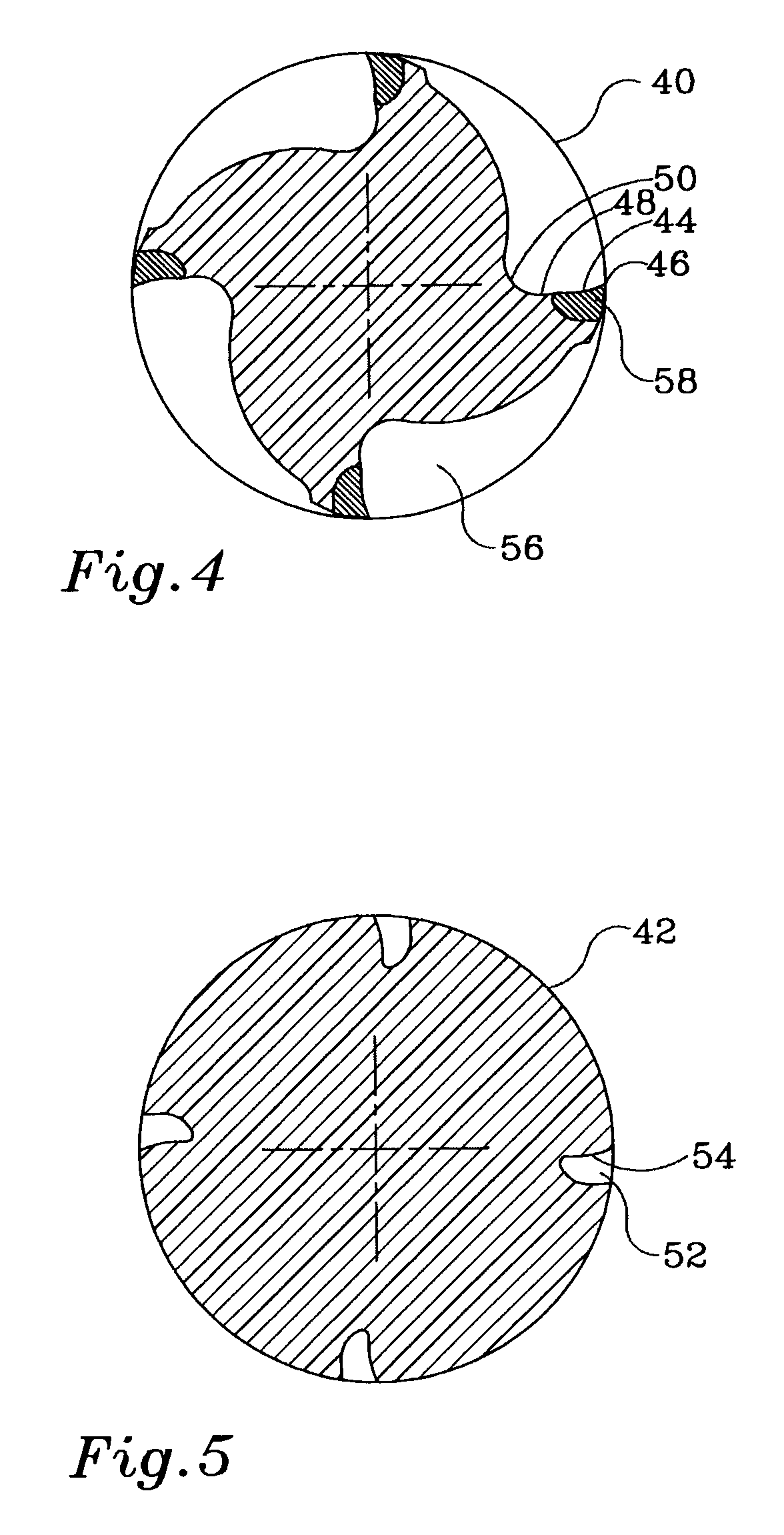Rotary cutting tool having a cutting edge formed of veined pcd
a cutting edge and rotary cutting technology, which is applied in the field of rotary cutting tools, can solve the problems of high power consumption, undesired heating of the cutting tool, and chips that adhere to the tooth face, and achieve the effect of facilitating minimal pcd removal
- Summary
- Abstract
- Description
- Claims
- Application Information
AI Technical Summary
Benefits of technology
Problems solved by technology
Method used
Image
Examples
first embodiment
[0030]Referring to FIGS. 4 and 5, there are shown a four flute PCD rotary cutter 40 and corresponding blank 42 made in accordance with the present invention. The tooth face, as viewed in a cross-section perpendicular to the cutter axis, is divided into two sections: a first concave section 44 (constituting a first curved surface) proximate the cutting edge 46, and a second concave section 48 (constituting a second curved surface) proximate the tooth root 50 and abutting the first section 44. The TC blank 42 is provided with grooves 52 formed with a leading face 54 corresponding to the shape of the first concave section 44 of the cutter 40. In some embodiments, the first concave section 44 is smaller than the second concave section 48.
[0031]Subsequent to compacting and sintering of PCD veins in grooves 52, the flutes 56 are formed by a standard grinding operation. The first concave section 44 of the PCD veins is exposed with close tolerance to final shape, and minimal EDM operation i...
second embodiment
[0033]With reference to FIGS. 6 and 7, there is shown a four flute PCD rotary cutter 60 and corresponding TC blank 62 made in accordance with the present invention. The tooth face, as viewed in cross-section perpendicular to the cutter axis, is divided into two sections, a first convex section 64 (constituting a first curved surface) proximate the cutting edge 66, and a second concave section 68 (constituting a second curved surface) proximate the tooth root 70 and abutting the first section 44. The blank 62 is provided with grooves 72 formed with leading face 74 corresponding to the final convex shape of the first convex section 64 of the cutter 60. In some embodiments, the first convex section 64 is smaller than the second concave section 68.
[0034]Subsequent to compacting and sintering of PCD veins in grooves 72, the flutes 76 are formed by a standard grinding operation. The first convex section 64 of the PCD veins is exposed with close tolerance to final shape, and minimal EDM op...
PUM
| Property | Measurement | Unit |
|---|---|---|
| Shape | aaaaa | aaaaa |
| Width | aaaaa | aaaaa |
| Perimeter | aaaaa | aaaaa |
Abstract
Description
Claims
Application Information
 Login to View More
Login to View More - R&D
- Intellectual Property
- Life Sciences
- Materials
- Tech Scout
- Unparalleled Data Quality
- Higher Quality Content
- 60% Fewer Hallucinations
Browse by: Latest US Patents, China's latest patents, Technical Efficacy Thesaurus, Application Domain, Technology Topic, Popular Technical Reports.
© 2025 PatSnap. All rights reserved.Legal|Privacy policy|Modern Slavery Act Transparency Statement|Sitemap|About US| Contact US: help@patsnap.com



